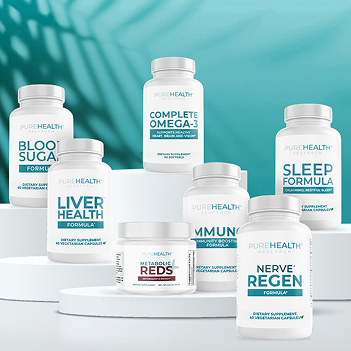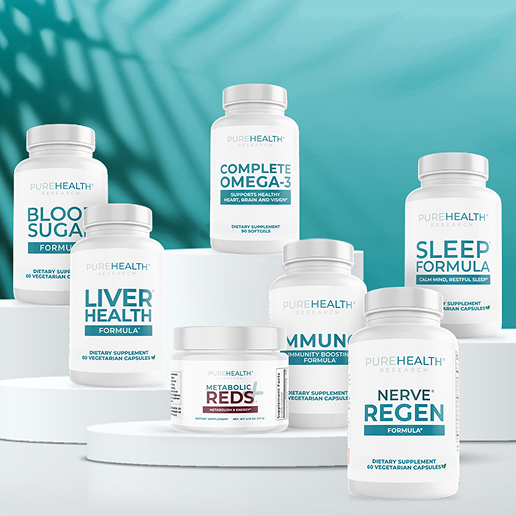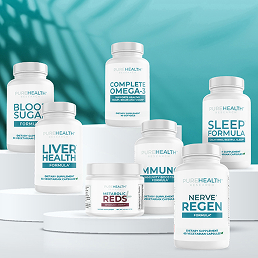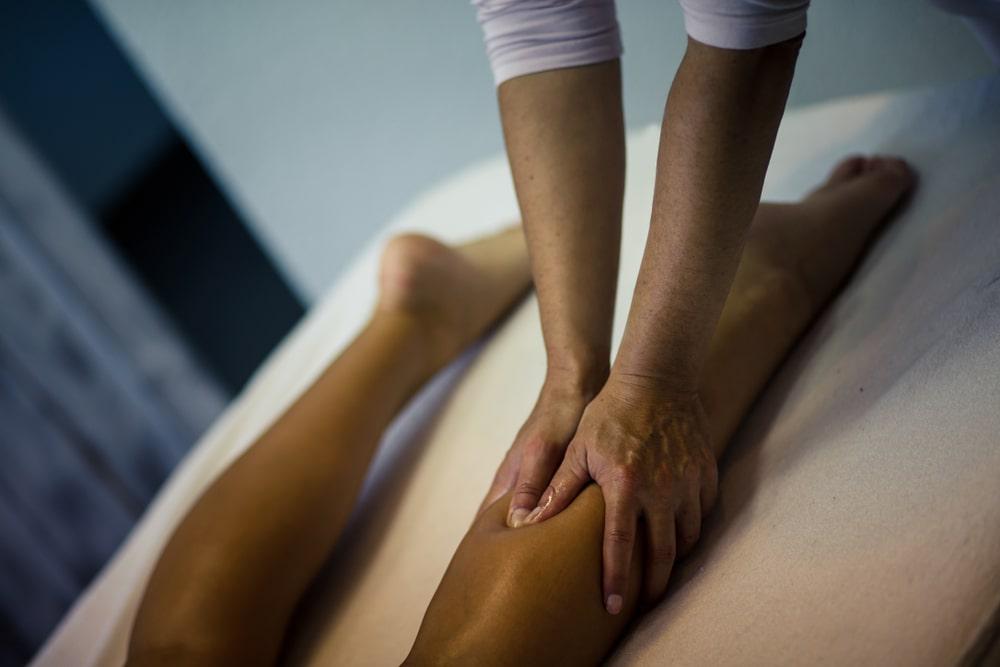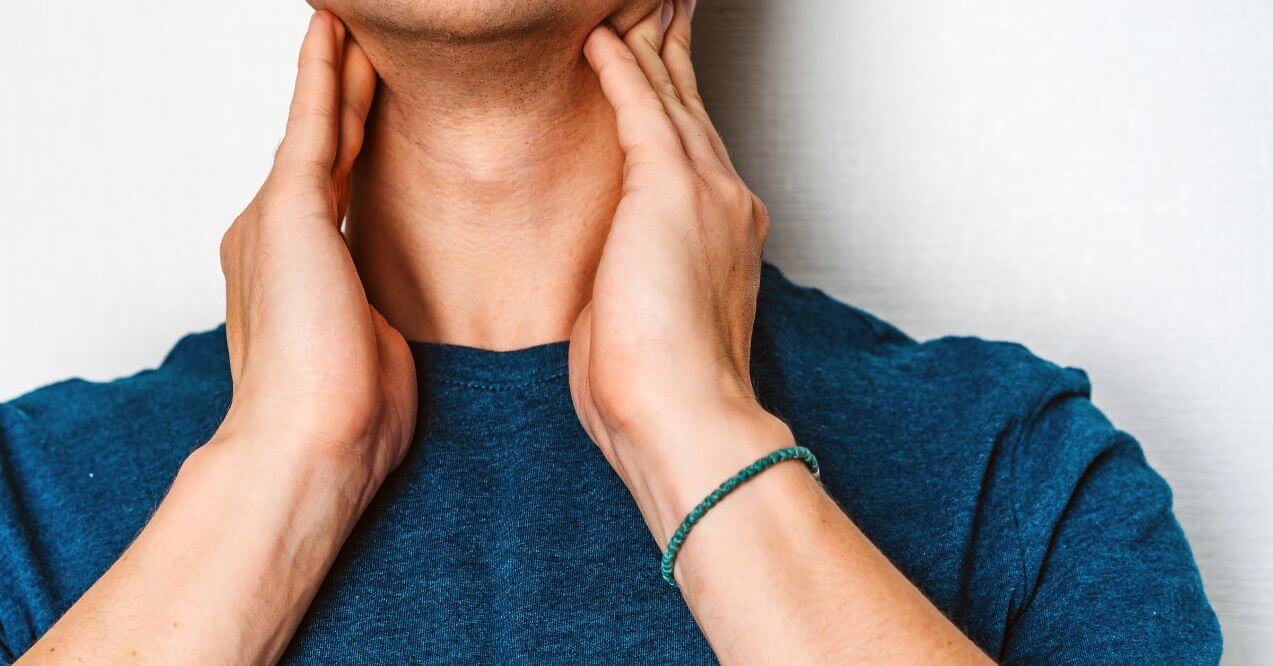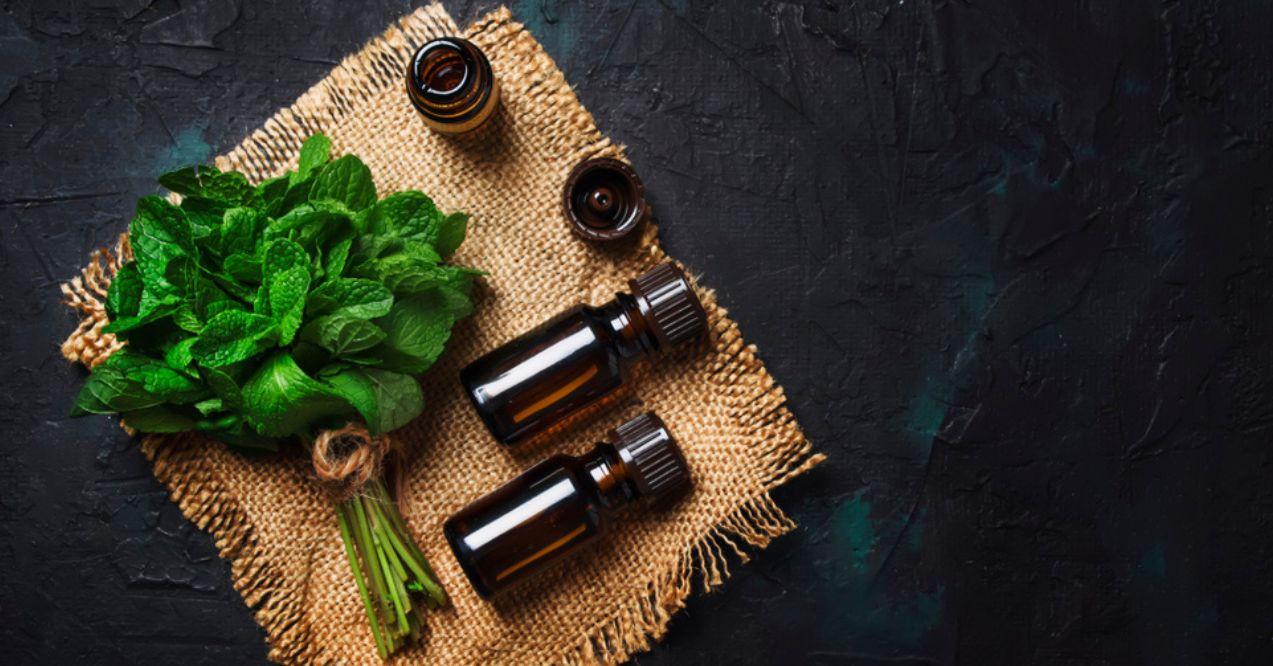Can Mold Cause Swollen Lymph Nodes?
Can mold cause swollen lymph nodes? Discover the symptoms, health risks, and ways to prevent and manage mold exposure.
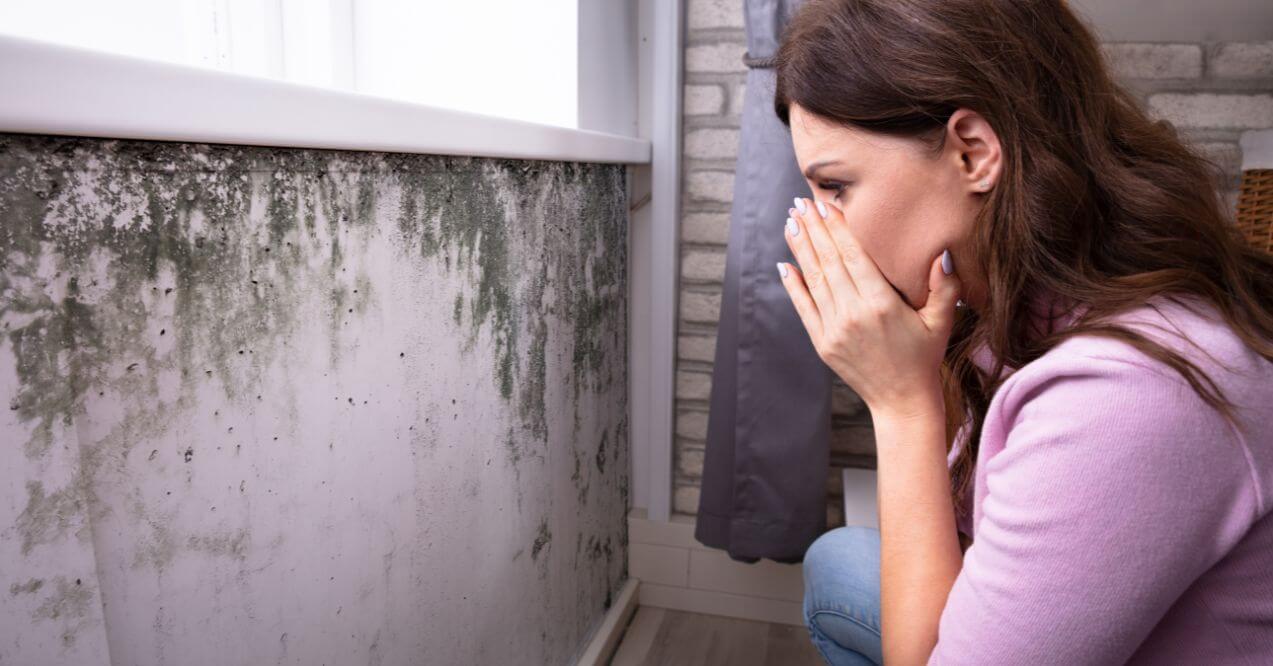

Can mold cause swollen lymph nodes? This question often arises when discussing the health impacts of mold exposure. Mold, a type of fungus that thrives in damp environments, is more than just an unsightly household nuisance. It can potentially affect human health in various ways, including the lymphatic system.
This blog post delves into the relationship between mold exposure and its effects on the body, with a focus on lymph nodes. We’ll explore the symptoms of mold exposure, potential health risks, and preventive measures to maintain a mold-free environment. Additionally, we’ll discuss ways to support lymphatic health naturally, including how to clean your lymphatic system through lifestyle choices.
What is Mold Exposure?
Molds are fungi that grow in damp, warm places. They help break down dead plants in nature. But when mold grows inside, it can make you sick.
Mold spreads by releasing tiny spores into the air. You can breathe in these spores, eat them, or touch them.
People come into contact with mold in different ways:
- Breathing in Mold Spores – This is the most common way. It happens both indoors and outdoors, especially where there’s a lot of mold.
- Swallowing Mold – This can occur by eating spoiled food or drinking contaminated drinks.
- Touching Moldy Surfaces – This can irritate your skin or cause allergic reactions.
Mold can grow in many places. At home, you might find it in damp basements or steamy bathrooms. Leaky roofs and wet materials also encourage mold growth. Outside, mold thrives in rotting leaves, compost piles, and humid areas.
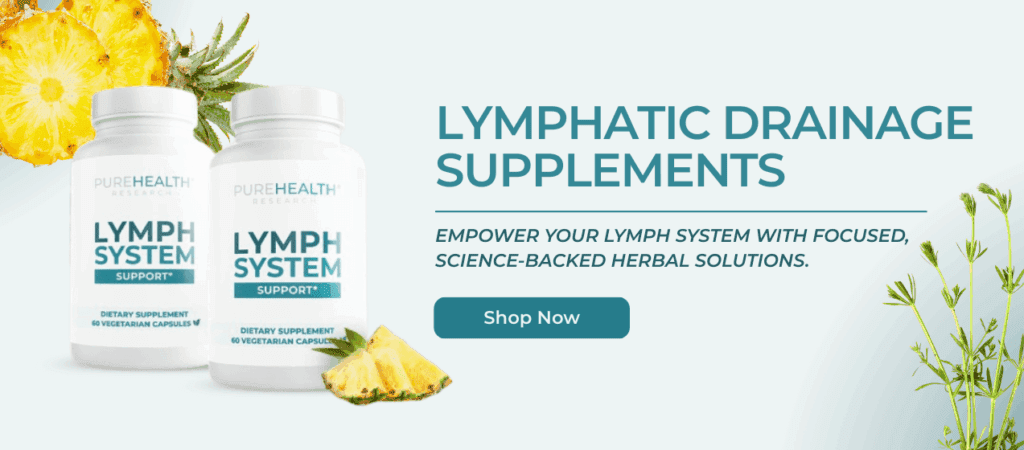
What Are the Mold Exposure Symptoms?
Exposure to mold can cause various symptoms. These symptoms may differ from person to person and depend on how long you’re exposed to mold. Here are some common symptoms linked to mold exposure:
- Respiratory Issues – Breathing in mold spores can cause coughing, wheezing, and shortness of breath. It may also trigger asthma attacks. If you already have breathing problems, mold can make them worse.
- Allergic Reactions – Mold can set off allergies. You might start sneezing or get a runny nose. Your eyes could become itchy and watery. Some people may develop skin rashes. These reactions are more likely if you’re allergic to mold.
- Immune System Response – Can mold cause swollen lymph nodes? While not a common symptom, some people might experience swollen lymph nodes due to their immune system reacting to mold exposure. This is more likely in individuals with mold allergies or those with compromised immune systems.
- Eye and Skin Problems – Mold spores can irritate your eyes, making them red, itchy, and watery. If mold touches your skin, it might cause rashes, itching, or hives. Some people may get more serious skin reactions.
The strength and type of symptoms can vary. It depends on how sensitive you are to mold and how much you’re exposed to it. Knowing these symptoms is important. It can help you take steps to reduce mold exposure and protect your health.
Can Mold Cause Swollen Lymph Nodes in Humans?
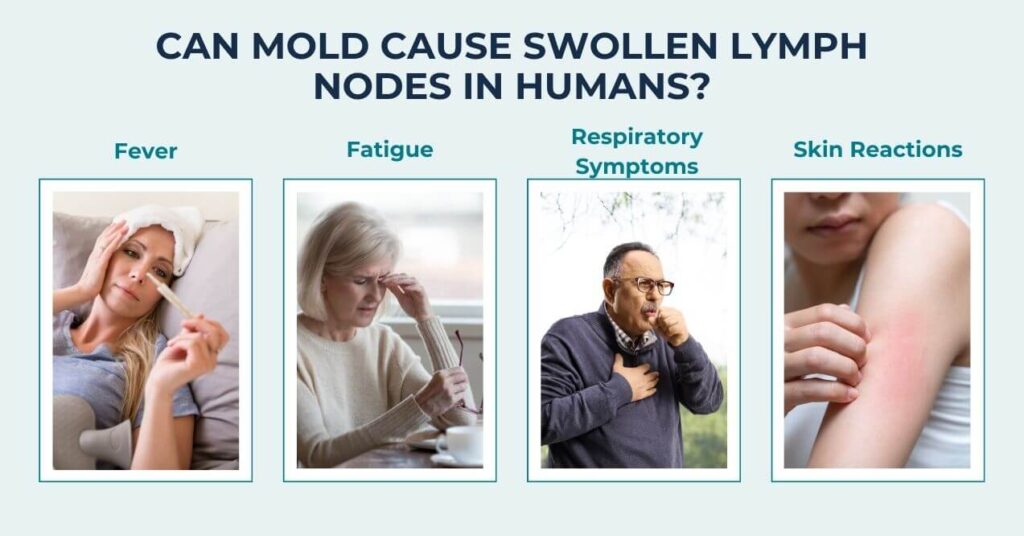
Can mold cause swollen lymph nodes? The lymphatic system plays a crucial role in the body’s immune response, filtering harmful substances and producing immune cells to fight infections. When exposed to irritants or pathogens, lymph nodes can become swollen as they work to eliminate the threat.
Mold exposure can indeed cause swollen lymph nodes in some individuals. This reaction occurs because the body perceives mold spores as foreign invaders, prompting an immune response. When mold spores are inhaled, ingested, or come into contact with the skin, the immune system activates, leading to inflammation and swelling in the lymph nodes. This is particularly common in individuals with mold allergies or sensitivities.
Swollen lymph nodes due to mold exposure typically occur in areas such as the neck, armpits, or groin, where clusters of lymph nodes are located.
These swollen nodes may be tender to the touch and can be accompanied by other symptoms such as:
- Fever – The body’s response to mold exposure can include a mild to moderate fever.
- Fatigue – Persistent exposure to mold can lead to a general feeling of tiredness and weakness.
- Respiratory Symptoms – In addition to mold swollen lymph nodes, individuals may experience coughing, wheezing, and nasal congestion.
- Skin Reactions – Direct contact with mold can cause skin rashes and itching, which may contribute to the overall immune response.
It’s important to note that while swollen lymph nodes can be a sign of mold exposure, they are also a common symptom of various other infections and health conditions. Therefore, identifying the cause of swollen lymph nodes requires considering other symptoms and potential exposure sources.
Other Health Risks of Mold Exposure
Long-term exposure to mold can cause health problems beyond allergies and breathing issues. If you’re around mold for a long time, you might develop lasting health problems. This is especially true if you already have health conditions or a weak immune system.
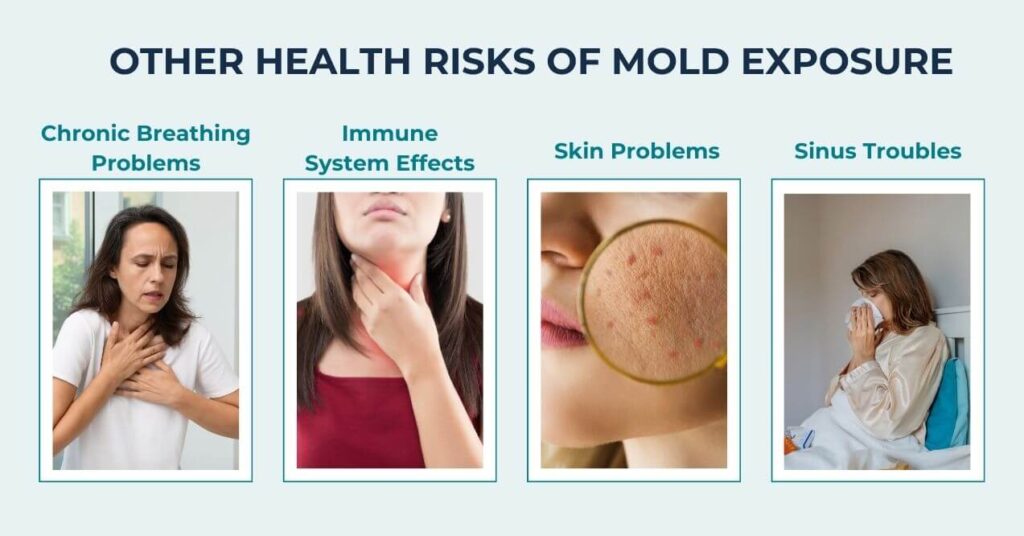
Here are some wider health effects of mold exposure:
- Chronic Breathing Problems – Breathing in mold spores for a long time can lead to ongoing lung issues. You might develop bronchitis or your asthma could get worse. These problems can make it hard to breathe comfortably.
- Immune System Effects – If you’re around mold too much, it can affect your body’s defenses. Your immune system might work harder, sometimes causing swollen lymph nodes as it fights off the mold-related inflammation. This extra work can leave you more vulnerable to other infections.
- Skin Problems – Touching mold often can irritate your skin. You might develop long-lasting skin conditions like eczema. These can cause itchy, red, or dry patches on your skin.
- Sinus Troubles – Mold spores can cause ongoing sinus infections. These can lead to headaches, stuffy nose, and face pain that doesn’t go away easily.
It’s important to understand these risks. They show why it’s crucial to deal with mold problems quickly to protect your health in the long run.
How to Prevent It?
Preventing mold growth in your home requires active steps. Here are some practical strategies:
1. Humidity Control
Keep indoor humidity between 30% and 50%. Use dehumidifiers in damp areas like basements and bathrooms. Air conditioners can also help reduce humidity. Check for leaks and fix water damage quickly to stop mold from growing.
2. Ventilation Solutions
Good airflow helps prevent mold. Use exhaust fans in kitchens and bathrooms to remove moist air. Open windows and doors when you can to improve air circulation in your home. This helps keep the air dry and less friendly for mold.
3. Mold Inhibitors and Cleaners
Use products designed to kill and prevent mold. Clean areas like bathrooms and kitchens regularly with these products. You can also apply mold inhibitors to walls and ceilings for extra protection. Always follow the instructions on the product label for safe use.
4. Home Remedies and Self-Care Against Mold
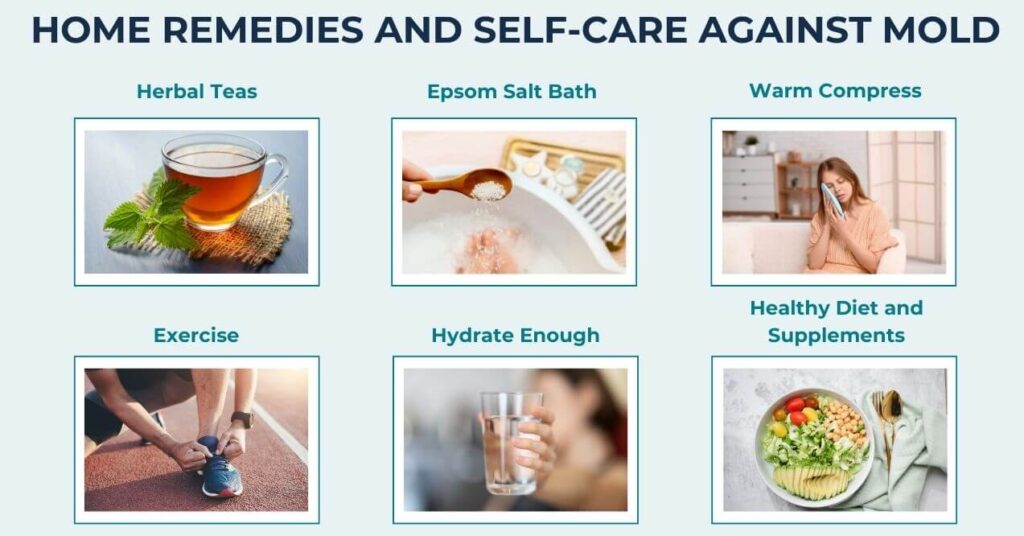
You can manage mold exposure symptoms with home remedies and self-care. Here are some helpful methods:
Herbal Teas
Drink teas made from nettle, peppermint, or ginger. These can help with breathing and reduce allergy symptoms. Nettle tea may lower inflammation, while peppermint can clear your nose. Ginger tea boosts your immune system. These teas may also help if you’re wondering whether mold exposure can cause swollen lymph nodes.
Additionally, incorporating herbs for lymphatic system health, such as echinacea and cleavers, into your teas can further support your body’s detoxification processes.
Epsom Salt Bath
Soak in a warm bath with Epsom salts to soothe irritated skin and reduce stress. Add a cup or two of Epsom salts to your bath and soak for 20 minutes. This can help remove toxins and relax your muscles. Regular Epsom salt baths can help your body deal with mold exposure and may ease concerns about mold causing swollen glands.
Warm Compress
Apply a warm, damp cloth to your face to ease sinus congestion and headaches from mold allergies. This opens up your nasal passages and reduces sinus pressure. It’s a simple, soothing method that can offer quick relief when dealing with mold exposure symptoms and aligns well with natural remedies for sinus infection. Techniques like warm compresses, steam inhalation, and hydration are commonly recommended as part of natural sinus care.
Exercise
Regular physical activity can strengthen your lungs and boost your immune system. Try activities like walking, yoga, or swimming. Exercise also helps your body remove toxins more effectively, which is helpful if you’re concerned about whether mold can cause swollen lymph nodes. Stay active to help your body handle mold exposure better.
Additionally, essential oils for lymphatic drainage, such as grapefruit or lemon oil, also may be massaged into the skin during exercise to further support this process.
Hydrate Enough
Drink plenty of water to help flush out toxins. Good hydration keeps your nose and throat moist, which helps trap and remove mold spores. Aim for at least eight glasses of water a day. Proper hydration can also support your lymphatic system, potentially easing worries about mold causing swollen glands.
Healthy Diet and Supplements
Eat foods rich in antioxidants and vitamins to support your immune system. Choose fruits, vegetables, nuts, and seeds. These foods provide nutrients that help your body fight the effects of mold exposure, including potential lymph node swelling. However, it’s important to avoid the worst foods for the lymphatic system, such as processed foods and too much sugar, which can make inflammation worse.
To detox the lymphatic system naturally, consider integrating targeted supplements. A carefully formulated lymphatic system supplement can help maintain a healthy system and manage swelling caused by environmental factors like mold exposure.
Explore our collection of supplements for lymphatic system health. Formulated to maintain fluid balance, support circulation, and promote whole-body wellness naturally. Discover it now!

Conclusion
Mold exposure can seriously affect your health. It may cause swollen lymph nodes and other symptoms. Mold can trigger your body’s defenses and might lead to long-term health issues.
Preventing mold growth is very important. Keep your home dry and well-ventilated. Use the right cleaning products to stop mold from growing. These steps can greatly reduce your risk of mold-related health problems.
If you think mold is making you sick, try some natural remedies. Drink herbal teas or take Epsom salt baths. Also, exercise regularly and eat healthy foods. These simple steps can help you feel better.
Remember, if your symptoms don’t go away or get worse, see a doctor. Stay informed and take action to protect yourself and your family from mold. This will help you keep a healthier home.
Yes, mold exposure can cause headaches. Inhaling mold spores can lead to sinus congestion and inflammation, resulting in headaches and migraines. Reducing mold exposure can help alleviate these symptoms.
Yes, mold exposure can make you dizzy. Prolonged inhalation of mold spores can affect the central nervous system, leading to symptoms such as dizziness, headaches, and difficulty concentrating. Addressing mold exposure is essential for reducing these symptoms.
Fungus, including mold, can cause swollen lymph nodes. This occurs when the immune system reacts to fungal spores, leading to inflammation and swelling as the body tries to fight off the perceived threat.
Sign up for our Healthy Living newsletter!
Advertisement. This site offers health, wellness, fitness and nutritional information and is designed for educational purposes only. You should not rely on this information as a substitute for, nor does it replace, professional medical advice, diagnosis, or treatment. If you have any concerns or questions about your health, you should always consult with a physician or other health-care professional. Do not disregard, avoid or delay obtaining medical or health related advice from your health-care professional because of something you may have read on this site. The use of any information provided on this site is solely at your own risk.
